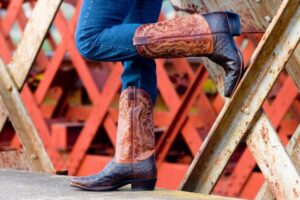Will urgent care give you a walking boot?
Introduction to Urgent Care Facilities and Orthopedic Injuries
Urgent care centers play a vital role in addressing a range of medical needs promptly, including orthopedic injuries. Understanding whether urgent care facilities issue walking boots is crucial for individuals seeking immediate treatment for injuries like ankle sprains, fractures, or other foot-related conditions.
Conditions Requiring Walking Boots
Orthopedic injuries that might require walking boots for stabilization and support include sprains, fractures, ligament injuries, and tendon strains. These injuries can significantly impact mobility and necessitate immediate care. Understanding the specific conditions that warrant a walking boot is essential when considering urgent care for treatment.
Evaluation at Urgent Care

Upon arrival at an urgent care facility, healthcare providers conduct thorough evaluations of orthopedic injuries. This assessment involves a physical examination and might include imaging tests such as X-rays to accurately diagnose the severity and nature of the injury. The decision to issue a walking boot depends on the diagnosis and the healthcare provider’s assessment.
Provision of Walking Boots
The decision to provide a walking boot at an urgent care facility hinges on various factors. Healthcare providers consider the severity of the injury, the patient’s medical history, and their ability to follow care instructions. While urgent care centers are equipped to handle minor orthopedic injuries, more complex cases may require referral to specialized orthopedic care for a comprehensive treatment plan.
Alternative Treatments and Referrals
In instances where a walking boot might not be immediately issued, urgent care facilities offer alternative treatments such as splinting, bracing, or applying temporary casts to provide support and stability to the affected area. Additionally, if the injury is severe or requires further specialized care, urgent care providers may refer patients to orthopedic specialists or recommend follow-up appointments for continued evaluation and treatment.
Considerations for Receiving a Walking Boot at Urgent Care
The decision to provide a walking boot at an urgent care center is based on several considerations. The healthcare provider assesses the type and severity of the injury, ensuring that the walking boot is necessary for proper healing and mobility support. Factors such as the patient’s medical history, any pre-existing conditions, and their ability to comply with the prescribed care plan also influence the decision.
Alternative Treatments and Management Strategies

In situations where issuing a walking boot might not be immediate or suitable, urgent care centers offer alternative treatments to ensure the injury is properly managed. Depending on the nature of the injury, options like splinting, bandaging, or prescribing crutches for temporary support may be recommended. These measures aim to stabilize the affected area while minimizing discomfort and promoting healing.
Urgent Care Referrals and Follow-Up Care
For more complex orthopedic injuries or cases requiring specialized care, urgent care centers facilitate referrals to orthopedic specialists or other healthcare providers. Referrals ensure that patients receive comprehensive evaluation and treatment tailored to their specific injury. Moreover, urgent care providers often emphasize the importance of follow-up care, recommending subsequent appointments for ongoing evaluation and monitoring of the injury’s progress.
Patient Education and Recovery Expectations
A crucial aspect of urgent care treatment involves patient education regarding injury management, care instructions for the walking boot (if provided), and expectations for recovery. Patients are guided on how to properly use the walking boot, potential limitations during the healing process, and the anticipated timeline for recovery. Clear communication between healthcare providers and patients helps ensure better adherence to the prescribed treatment plan, fostering optimal recovery outcomes.
Follow-Up Care and Monitoring
After receiving initial treatment and a walking boot at an urgent care center, patients are typically advised on the importance of follow-up care. Follow-up appointments ensure that the injury is healing properly and that the walking boot is appropriately supporting the recovery process. Healthcare providers may adjust treatment plans, assess healing progress, and provide further guidance for optimal recovery during these follow-up visits.
Patient-Centric Approach in Urgent Care
Urgent care centers prioritize patient-centered care, aiming to address immediate needs while considering individual patient circumstances. The decision to provide a walking boot is made based on a thorough evaluation and tailored to each patient’s specific injury and condition. This approach ensures that patients receive personalized care and appropriate interventions, contributing to better outcomes and overall satisfaction with the care received.
Limitations and Precautions with Walking Boots
While walking boots offer crucial support and stability for various foot and ankle injuries, patients should also be aware of their limitations and potential risks. Wearing a walking boot doesn’t negate the possibility of further injury if used improperly. Patients should follow healthcare providers’ instructions diligently, avoid putting excessive weight or strain on the injured area, and refrain from altering the boot without medical advice.
Costs and Insurance Coverage
Understanding the financial aspect of receiving a walking boot at urgent care is essential. Patients should be aware of potential costs associated with the boot and the urgent care visit. It’s advisable to check insurance coverage beforehand to determine if the walking boot and urgent care services are included in the policy. Urgent care centers often provide transparent pricing information to help patients make informed decisions regarding their treatment.
Effectiveness and Benefits of Walking Boots
Walking boots are effective in providing stability, support, and protection for a range of foot and ankle injuries. They immobilize the injured area, allowing for proper healing while enabling some level of mobility. These boots are designed to alleviate pressure on the affected region, reducing pain and discomfort. Understanding the benefits of walking boots can help patients appreciate their role in the recovery process.
Patient Expectations and Recovery Timeframes
Managing patient expectations regarding the use of walking boots is crucial. While the boot aids in the healing process, patients should understand that recovery times vary based on the severity and nature of the injury. Healthcare providers typically outline a timeline for wearing the boot and advise on gradual resumption of activities as the injury heals. Clear communication about expected recovery milestones helps patients stay informed and patient throughout the healing journey.
Accessibility and Availability of Walking Boots

Urgent care centers usually maintain a stock of medical supplies and equipment, including walking boots, to address immediate orthopedic needs. However, the availability of specific sizes or models may vary. In some cases, urgent care centers may need to order or refer patients to external suppliers for specialized walking boots. Patients should inquire about the availability of walking boots at the urgent care facility or potential alternatives if their size or type is not readily available.
Long-Term Use and Follow-Up Care
In cases where prolonged use of a walking boot is required, healthcare providers stress the importance of continued follow-up care. Long-term use of walking boots may impact mobility and require ongoing monitoring to prevent complications or address any emerging issues. Follow-up appointments facilitate adjustments to the treatment plan, ensuring that the walking boot remains effective and supportive throughout the recovery process.
Conclusion
Urgent care centers serve as accessible healthcare facilities, offering prompt evaluation and treatment for a variety of medical concerns, including orthopedic injuries. While they can provide initial assessments and immediate care, the provision of walking boots depends on the specific circumstances of the injury. Patients should follow the guidance of healthcare providers regarding treatment options and referrals for optimal recovery.
how to care for ostrich skin boots. Read more…




